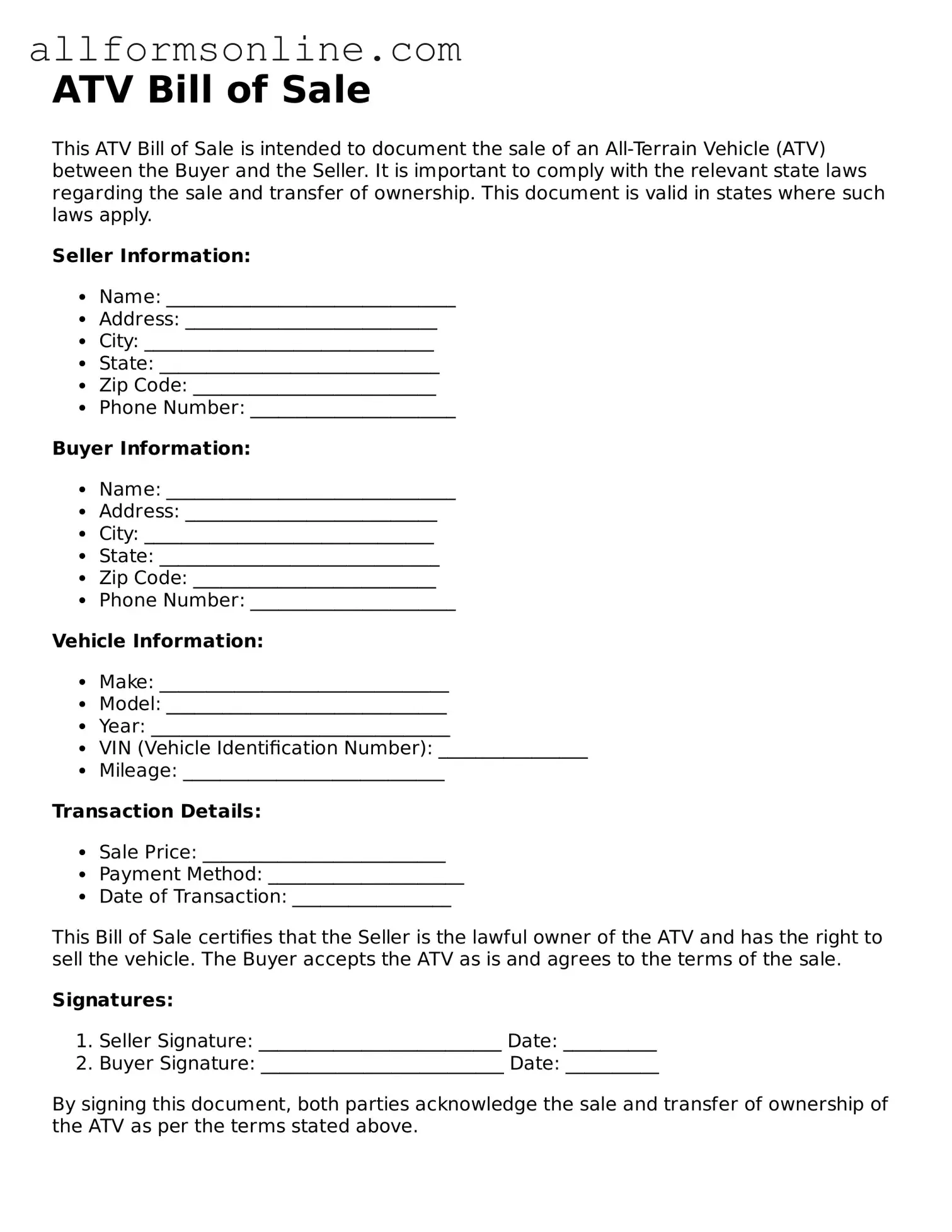What is an ATV Bill of Sale?
An ATV Bill of Sale is a legal document that records the transfer of ownership of an all-terrain vehicle (ATV) from one person to another. This document serves as proof of the transaction and includes important details about the ATV, the buyer, and the seller. It is essential for both parties to have this document to protect their rights and interests in the sale.
What information is included in an ATV Bill of Sale?
The ATV Bill of Sale typically includes the following information: the names and addresses of both the buyer and seller, the make, model, year, and Vehicle Identification Number (VIN) of the ATV, the sale price, and the date of the transaction. Additionally, it may include any warranties or conditions of the sale, as well as signatures from both parties to validate the agreement.
Is an ATV Bill of Sale required in every state?
While not all states require an ATV Bill of Sale for the transfer of ownership, it is highly recommended. Some states may have specific regulations regarding the sale of ATVs, and having a Bill of Sale can help ensure compliance with those laws. It also provides legal protection for both the buyer and seller in case of disputes.
Can I create my own ATV Bill of Sale?
Yes, you can create your own ATV Bill of Sale. However, it is important to ensure that it includes all necessary information and complies with your state’s requirements. Many templates are available online, but customizing the document to fit your specific transaction is advisable. This can help prevent misunderstandings and protect your interests.
Do I need to have the ATV Bill of Sale notarized?
Notarization is not typically required for an ATV Bill of Sale, but it can add an extra layer of security and authenticity to the document. If both parties agree, having the Bill of Sale notarized can help verify the identities of the buyer and seller and confirm that the transaction took place voluntarily.
What should I do after completing the ATV Bill of Sale?
After completing the ATV Bill of Sale, both the buyer and seller should keep a copy for their records. The buyer may need to present the Bill of Sale when registering the ATV with their state’s Department of Motor Vehicles (DMV) or equivalent agency. It is also wise to ensure that any outstanding liens on the ATV are cleared before finalizing the sale.
What if there are issues after the sale?
If issues arise after the sale, such as disputes over the condition of the ATV or claims of fraud, the Bill of Sale can serve as a critical piece of evidence. Both parties should refer to the terms outlined in the document. If necessary, legal advice may be sought to resolve the matter effectively and fairly.
